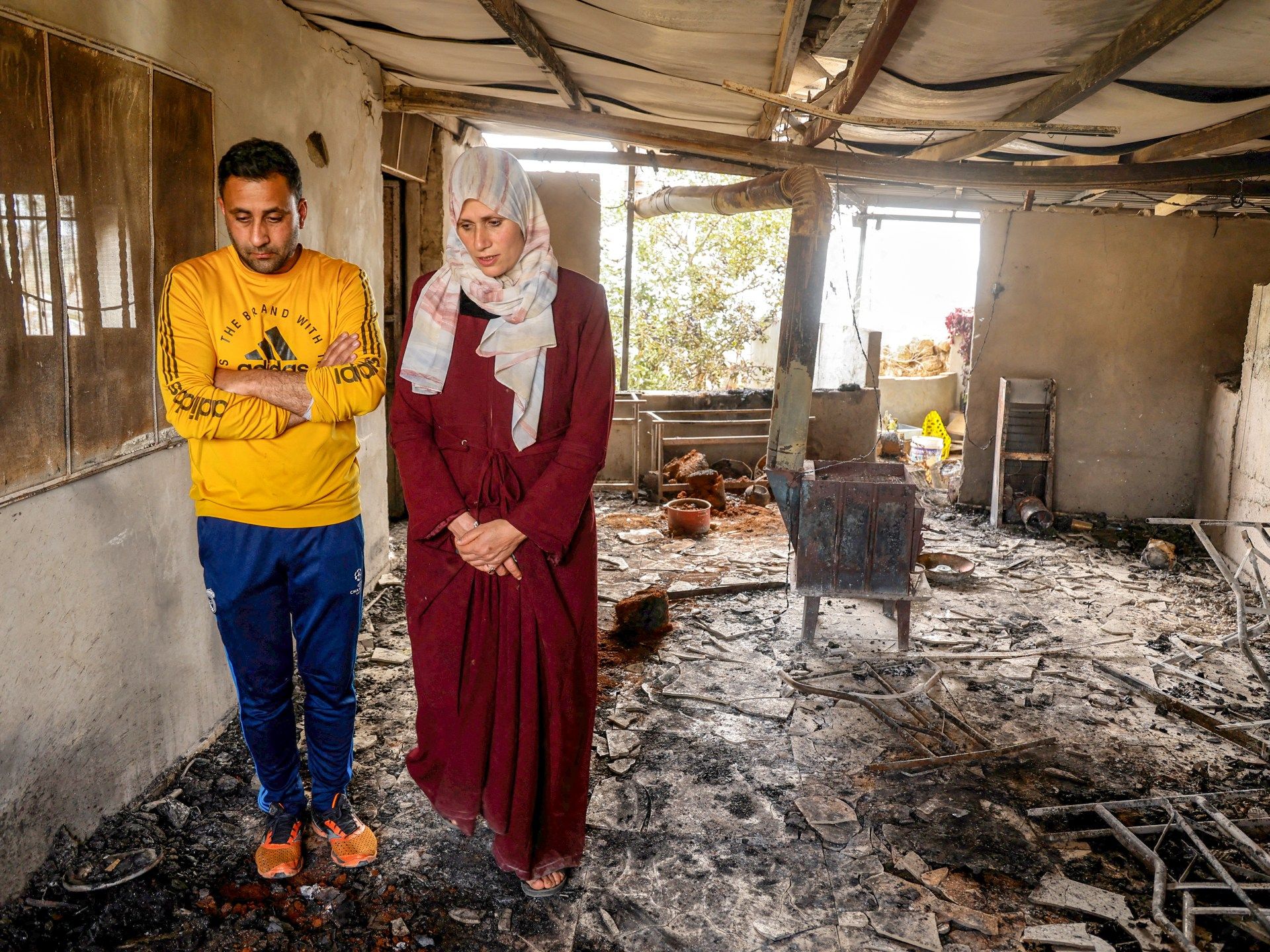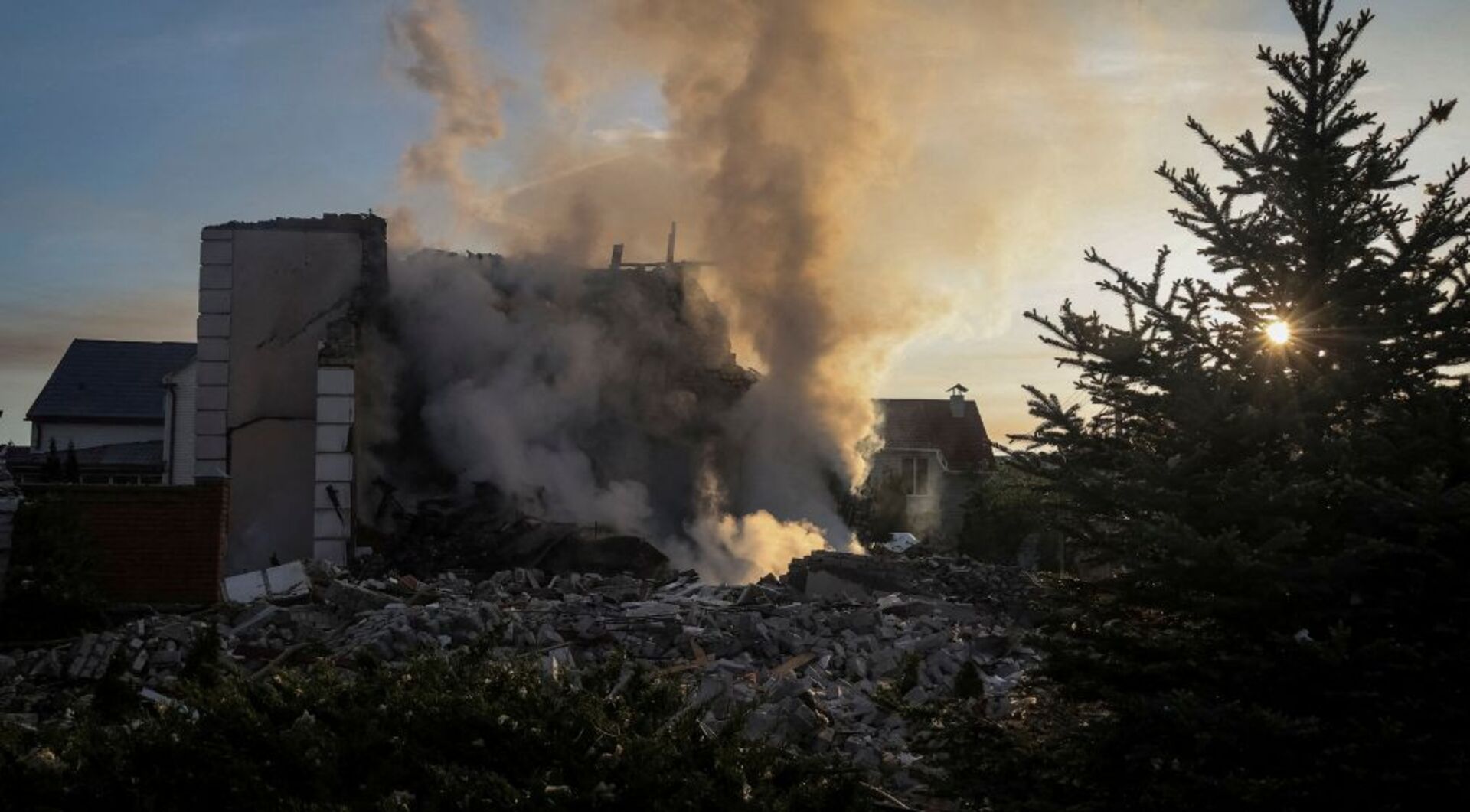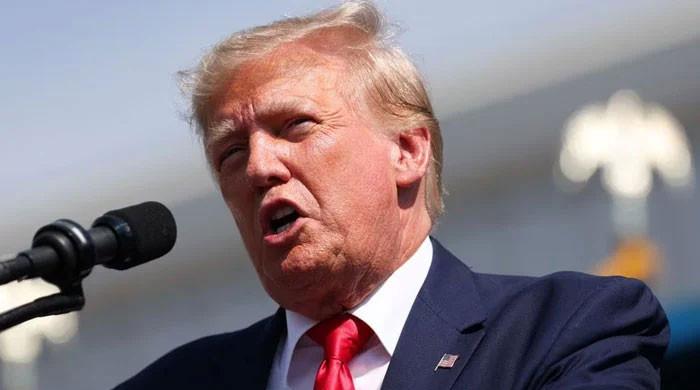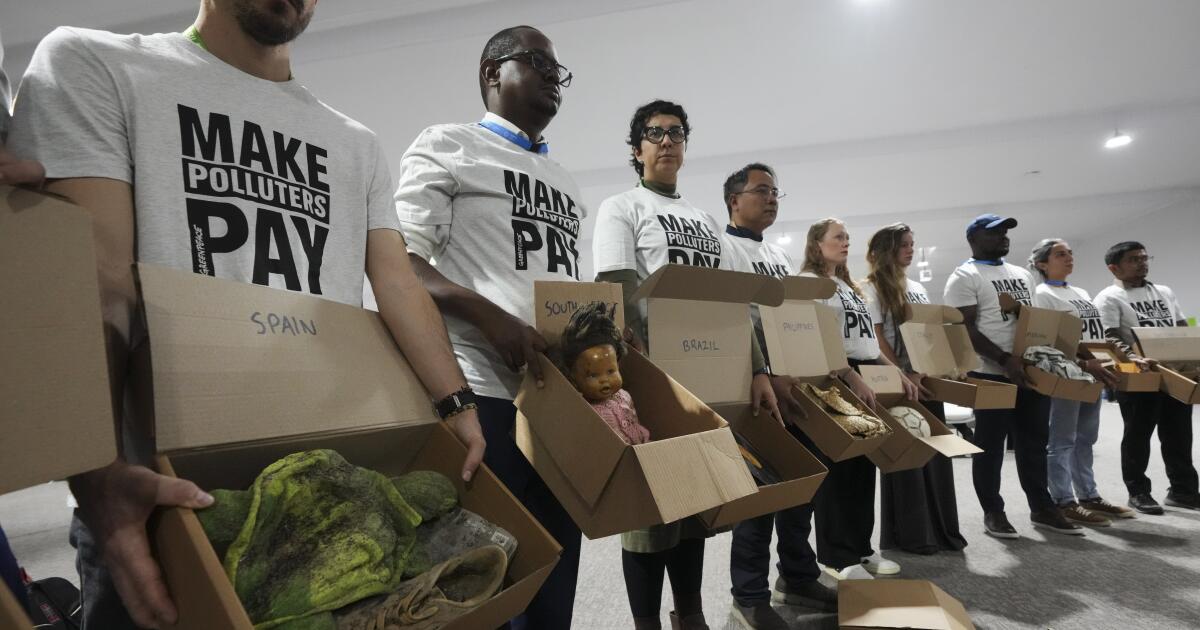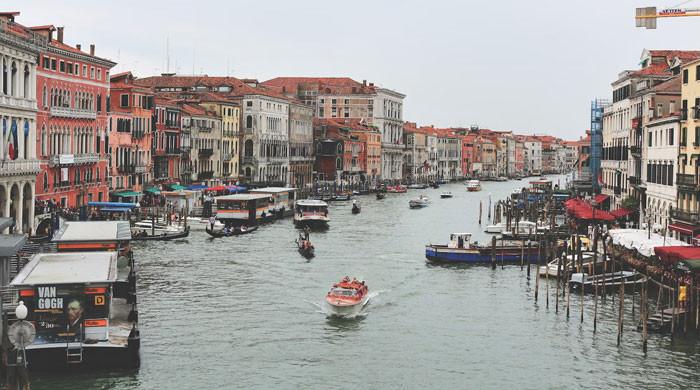When Israel began bombing Gaza on October 7, 2023, Fayez Atil felt that his community in the Bank occupied soon would also be attacked.
Atil is from the Palestinian village of Zanuta, a traditional grazing community in the Jordan Valley.
The settlers of the Israeli illegal settlements had harassed and attacked their village for years. Even so, violence intensified sharply after Israel launched what many describe as a “genocidal” war against Gaza.
“Suddenly he felt like a war,” he told Al Jazeera by phone.
“Every day and every night, illegal settlers would try to steal our sheep or destroy our village destroying our property and cars,” added the 45 -year -old man.
The 250 inhabitants of Zanuta gradually abandoned their village, and the way of life, due to the constant attacks and harassment.
Atil packed his belongings and left with his family after the Israeli settlers hit a 77 -year -old Palestinian pastor at the end of October 2024.
“They hit the old man, his wife and children,” said Atil. “It was the first time we saw that level of aggression of the settlers.”
Easy goals
Zanuta villagers are one of the 46 Palestinian Beduine communities in the occupied West Bank expelled from their lands by Israeli settlers backed by the State since October 7, 2023, according to Al-HAQ, a non-profit organization Palestine.
“What is happening [to Bedouin communities] It is not simply a problem of violent and radical settlers. This is state violence, ”explained Shai Parnes, spokesman for the Israeli group of human rights B tselem.
At the beginning of the Israel War against Gaza, Israel called thousands of reservists who served in the West Bank to fight in Gaza, and replaced them with “extremist settlers,” Parnes said.
“Speakers … Suddenly they obtained weapons, ammunition and military uniforms [after October 7]”Parnes told Al Jazeera.
These settlers suddenly possessed the legal power to kill and arrest the Palestinians.
All expulsions occurred in area C, which is scarcely populated and rich in agricultural resources.
Composed of 60 percent of the occupied West Bank, it is the largest of three areas created in the West Bank as part of the 1993 OSLO agreements among the Palestinian and Israeli leaders.
The Oslo agreements aimed to apparently create a Palestinian state in the West Bank with Israel.
But in the last 32 years, the size of the illegal Israeli settlements there increased constantly, and its population increased from approximately 200,000 to more than 750,000.
Area C is also under the complete control of the Israeli army, which facilitates the settlers, with the support of the soldiers, surround the vulnerable communities of Palestinian shepherd and expel them from their lands, they say Palestinian and Israeli human rights groups.
This differs from area A, which is technically under the total control of the Palestinian authority, despite the fact that Israeli troops still attack it often, while area B is under joint control of the AP and the Israeli army.
'A racist system'
Even the Palestinian Bedouins who are citizens of Israel are being expelled from their land, human rights groups and activists say.
Around 120,000 Palestinians live in the so -called “Non -Recognized Villages” in the Naqab desert.
They are descendants of Palestinians who managed to remain in their lands during the Nakba, when the Zionist militias ethically cleaned about 750,000 Palestinians to give way to the statement of the state of Israel in 1948.
The Israeli government insists that the Beduine communities of the “not recognized” villages should simply move to cities, however, to do so would reduce their connection with the earth and threaten their way of life as shepherds.
Most of the Beduine communities have remained their right to stay in their land. However, Israel has long said that Bedouins are nomads that are never really established in one place.
However, Khalil Alamour, a Bedouin leader of the Khan Al-Sira people, explains that the Bedouins stopped migrating more than two centuries ago, and always return to their lands after migrating seasonally to look for food for their cattle.
“Bedouins are glued to our land. We are an indigenous community … we cannot simply be overturned to another place,” he said.
But Israel has refused to provide services to “unrecognized peoples”, instead of evicting the inhabitants of their homes and confiscating their land, Alamour said.
In November 2024, the Israeli police completed the demolition of UMM Al-Hiran, despite the fact that the Bedouin inhabitants had agreed to live with the Jewish settlers, as they told Al Jazeera in February 2024.
“Violence against us is part of a racist policy against all Bedouins and against the Palestinian community more generally. And the Bedouins are part of the Palestinian community,” Alamour told Al Jazeera.
Legal bleaching
Many Pastor communities in the West Bank have been uprooted several times since Nakba.
Abu Bashar, a Palestinian Mokhtar (mayor) by Wadi al-Seeq, said his community has been uprooted four times since Israel emerged.
The most recent incident occurred a few days after October 7, when Israeli settlers broke into the community and began to terrorize the inhabitants.
Around 187 people, from 45 to 50 families, fled on foot, walking for hours until they arrived in Ramon Village, where they have stayed so far.
“After October 7, the settlers went crazy. They surrounded our town and came with the army, which protected them, and expelled us from our village,” Abu Bashar told Al Jazeera.
“Now we are living in tents and in trees in terrible circumstances in Ramón,” he said.
In the last two years, Wadi Al-Seeq and Zanuta villagers have filed demands before the Israeli Supreme Court.
Critics say that passing through the Israeli courts, who do not have jurisdiction over occupied lands, according to international law, effectively legitimates the occupation of Israel.
According to human rights groups, the Supreme Court of Israel has played a key role in the legitimation of policies that violate Palestinian rights, such as the green light of the demolition of Palestinian homes and entire peoples.
“The Supreme Court is another mechanism used to bleach Israeli occupation,” said Parnes, from B zelem.
No other resource
Despite the historical role of the Supreme Court, several Palestinian Beduine communities have presented cases with him.
Qamar Mashraki, a Palestinian lawyer who represents Zanuta, as well as other Beduine communities expelled from their lands since October 7, has won two cases so far.
In January 2024, the inhabitants of Zanuta and UMM Dharit were informed that they had the legal right to return to their lands.
“We have to exploit every tool that [as Palestinians] have, ”Mashraki told Al Jazeera.
But Israeli settlers attacked families from Zanuta when they tried to return, preventing the community from rebuilding houses and walking to their animals, pushing many to flee again in September 2024.
With the help of Mashraki, the inhabitants of Zanuta presented a second motion from the Court that demanded that the Israeli authorities protect the community of the Israeli settlers.
Last month, the court issued a decision that the Army and the Police had to protect the people of Zanuta, said Atil. He added that families feel relatively safe to try to return to Zanuta again.
Dozens of other Beduine communities that have been expelled from their lands do not feel so lucky.
Many fear that they lose their land and their way of life, even if they start a legal battle.
Abu Bashar, from Wadi Al-Seeq, said his community is still waiting for the Supreme Court to decide if they can return to their lands.
Even if you can return legally, you are worried that settlers attack your community again.
“The settlers took us all: our homes, our tractors, our water supply and even our food,” he told Al Jazeera.
“We are under siege.”

